Editor’s note: As 2021 winds down, we’re celebrating with a 12 Days of Christmas Countdown of the most popular, helpful expert articles on Search Engine Journal this year.
This collection was curated by our editorial team based on each article’s performance, utility, quality, and the value created for you, our readers.
Each day until December 24th, we’ll repost one of the best columns of the year, starting at No. 12 and counting down to No. 1. Our countdown starts today with our No. 7 column, which was originally published on March 23, 2021.
Manick Bhan‘s article explained the concept of keyword clusters and how to use them to elevate SEO content strategies and gain an edge.
Thank you, Manick, for the outstanding content you have contributed to Search Engine Journal.
Enjoy!
Over the last few years, Google’s engineering team has directed its focus towards natural language processing and a deeper understanding of how on-page content interrelates.
Neural matching helped Google understand synonyms. BERT helped Google understand those tricky prepositions.
Advertisement
Continue Reading Below
With every core update, Google gets more literary.
But despite Google getting smarter, many site owners still optimize their websites with only a few keyword targets in mind.
This is an outdated practice, especially when we know our landing pages often end up ranking for hundreds of keywords anyway.
For those of us who have been following along since the early days of Google, this feels like a brave new world for on-page SEO.
As Google’s NLP capabilities continue to improve, our on-page SEO strategy also needs to evolve to reflect those advancements in search.
So how do we level up our on-page optimizations to match Google’s technology?
Keyword clustering is the answer.
What Are Keyword Clusters?
Keyword clusters are groups of keywords that represent searchers with similar purchase intent.
For example, “linen curtains,” “linen window curtains,” and, “white curtains linen,” are different keyword phrases, but they all represent searchers who want to buy linen curtains.
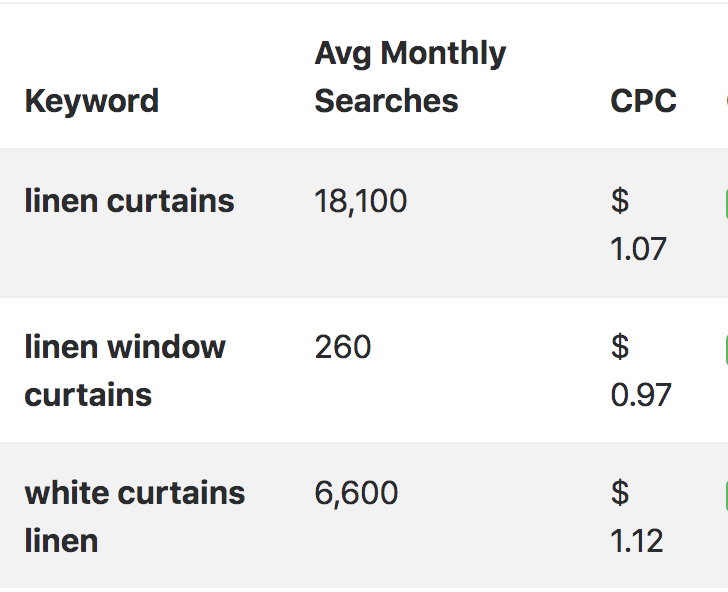 Screenshot taken by author, March 2021
Screenshot taken by author, March 2021Let’s say your brand sells linen curtains. If you only try to rank for the first keyword, you end up limiting your market share.
Advertisement
Continue Reading Below
If you instead get your web page ranking for your primary keyword and the long-tail variants and related subtopics, your page will often end up ranking for 10-20x the amount of keywords and pick up significantly more traffic.
How To Create Keyword & Topic Clusters
In order to harness the power of keyword clusters, it’s important to note that this strategy takes way more time and resources than a one-and-done approach to website optimization.
It requires more keyword research, more content creation, and more work for your SEO and marketing teams.
But in the end, building topic clusters on your website will make it more Google-friendly and user-friendly. The benefits of keyword clustering include:
- Strong rankings for long-tail keywords.
- Improved rankings for short-tail keywords.
- Higher organic traffic.
- Faster ranking improvements in the SERPs.
- More opportunities for internal linking.
- Building expertise and content authority in your industry niche.
Here’s a brief explanation for how to do keyword clustering and how to build out a content strategy around those clusters.
Step 1: Make Your Keyword List
Keyword clustering starts with keyword research. Lots of it.
Think of the primary keyword you want your website to rank for.
Then, identify all of the variations, long-tail phrases, and subtopics of that keyword that searchers are using.
To get started, look to your competitors to see what keywords they are currently ranking for.
Then use a keyword tool to find related keywords, autocompletes, subtopics, or questions that searchers are using to find products and services like yours.
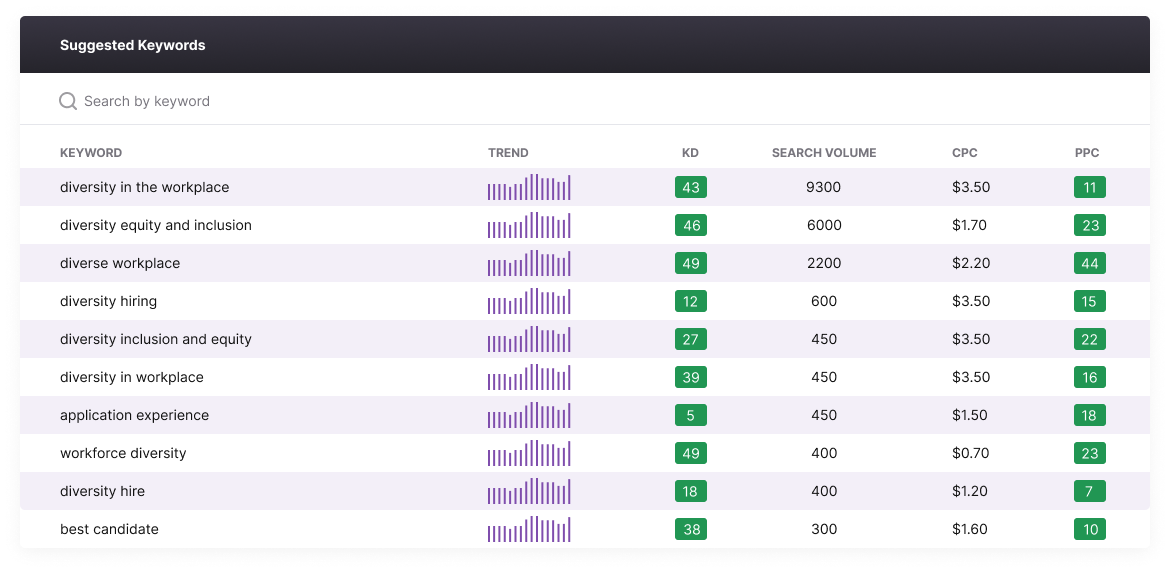 Screenshot taken by author, March 2021
Screenshot taken by author, March 2021There are a few different ways to document your keyword research, but the simplest solution is using spreadsheets.
Advertisement
Continue Reading Below
Make sure to include the organic difficulty, search volume, and cost-per-click metrics of the keywords in your list.
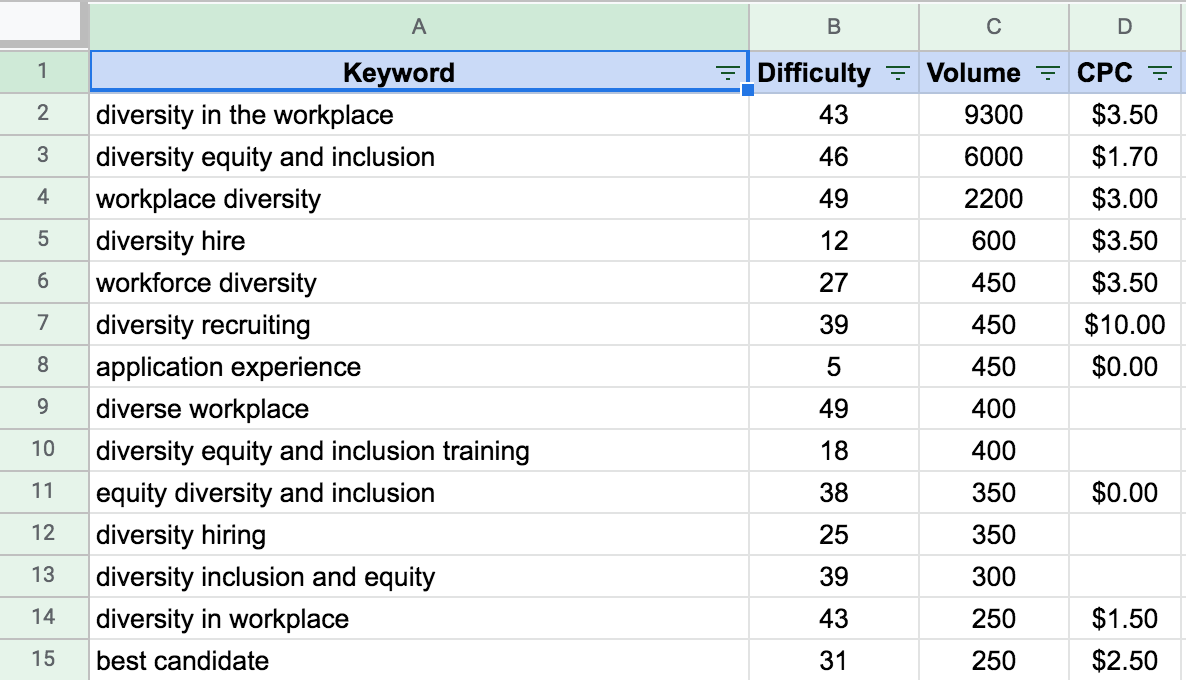 Screenshot from Excel, March 2021
Screenshot from Excel, March 2021These metrics will help you prioritize which keywords have the most economic value and should be the “core” keywords in your clusters.
Some SEO professionals identify thousands of keywords in their research. If you’re just getting started with this strategy though, a hundred keyword phrases are likely enough to identify several different topic clusters that you can build out on your website.
Advertisement
Continue Reading Below
As you generate your keyword list, keep in mind the importance of relevance and search intent.
You only want to include keywords that will bring the right kinds of searchers to your website, those who are actually interested in the products or services you offer and are likely to convert.
Step 2: Segment Your Keywords Into Groups
Once you have an extensive keyword list, you will start noticing patterns in your keywords.
You may notice the same words, phrases, synonyms, or subtopics that users include in their search queries. These patterns represent the potential ways you can cluster and form keyword groups.
The below image is an example of keyword research for a software platform that helps businesses recruit, interview, and hire employees.
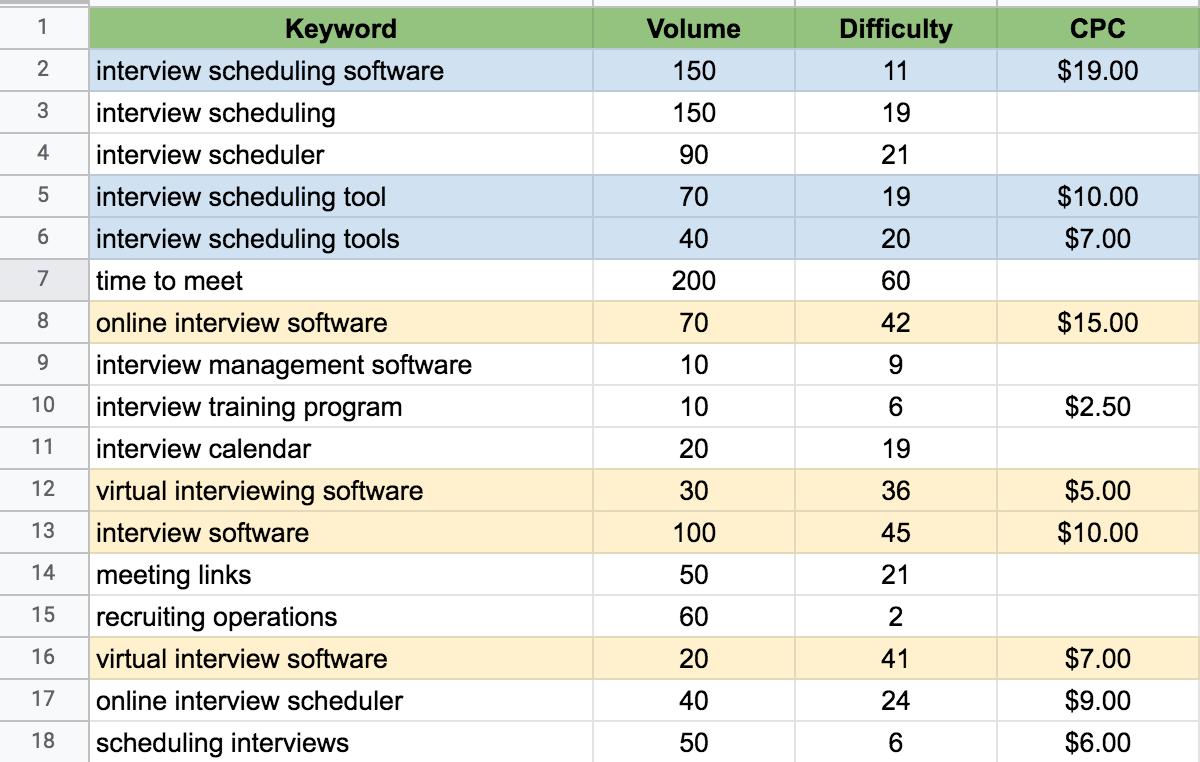 Screenshot from Excel, March 2021
Screenshot from Excel, March 2021Here are the criteria you should use to segment these keywords into clusters.
Advertisement
Continue Reading Below
Semantic Relevance
It’s important that the keywords in your clusters share similar search intent.
If you try to optimize a landing page for keywords that are too dissimilar, it will make the content less readable and confuse Google in regards to what your page content is really about.
Search Volume And CPC
The core keywords in your clusters should have a reasonable search volume (otherwise you optimize for nobody).
They should also have conversion potential (CPCs speak to their economic value).
Organic Difficulty
Whether you include keywords that have higher organic difficulty will depend on your site authority, backlink profile, and how established your website is.
Only include keywords in your clusters for which your site can realistically rank.
A Closer Look At Two Keyword Clusters
Once you find the core keyword for a cluster, pair it with complementary keywords.
For example, you can add some that are long-tail, lower difficulty, or lower search volume, or those that would be an easy win just by including enough information about them on the landing page.
Advertisement
Continue Reading Below
Let’s apply these keyword clustering fundamentals to the keywords for our software platform. Here is a potential keyword cluster:
 Screenshot from Excel, March 2021
Screenshot from Excel, March 2021Why do these keywords make a good cluster?
Because they share semantic relevance. These searchers are all looking for a product that helps with scheduling interviews.
The core keyword, “interview scheduling software,” is the highest value, and we’ve paired it with complementary keywords of lower search volume and solid CPC.
Advertisement
Continue Reading Below
Now, here’s a second cluster:
 Screenshot from Excel, March 2021
Screenshot from Excel, March 2021Semantically, these keywords imply a slightly different search intent and therefore belong in their own cluster. These searchers are more interested in a tool that helps them conduct virtual interviews.
Our core keyword is slightly more competitive to rank for, but we have filled out the cluster with keywords that have lower difficulty and strong conversion potential.
If you feel confident in your niche and understand the keyword metrics and the nuances of search intent, you can segment your keywords into groups manually (just like I illustrated above).
Advertisement
Continue Reading Below
There are also keyword grouping tools that automate the process. They can segment your keywords into clusters for you.
As you segment, remember that not all of the keywords in your list need to end up in your clusters.
The highest-value keywords are the most important to include.
High CPCs, strong search volume, and relevant search intent are what makes a keyword valuable for your brand.
Step 3: Create & Optimize Pillar Pages For Your Keyword Clusters
Once you’ve grouped your keywords into clusters, they provide a roadmap for how to create, optimize, and organize the content on your website.
Essentially, your keyword clusters represent the core topics of your website.
These are also referred to as “pillar pages.”
In our previous example, we identified two primary keyword clusters for our software platform.
To carry our keyword clustering properly, we need to create landing pages targeting each of those keyword clusters.
One landing page should be devoted to the interview scheduling feature of the platform. The other landing page should focus on the virtual interviewing tool.
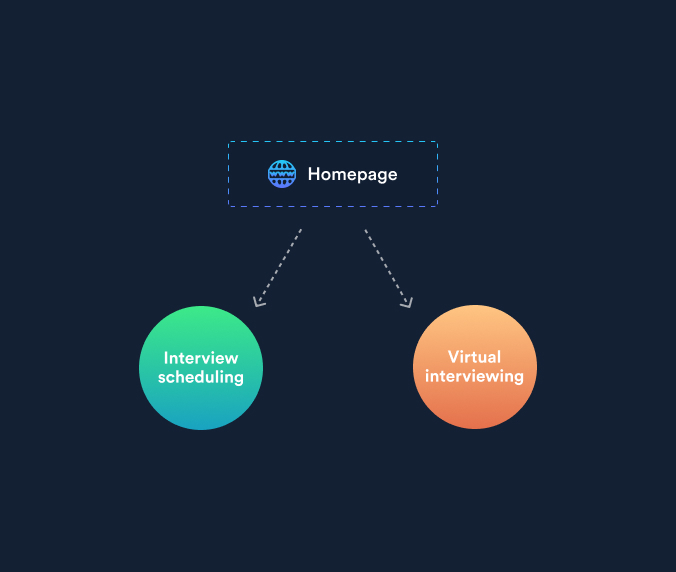
The pillar pages for your keyword clusters should incorporate on-page SEO best practices. One of my favorite strategies is to use a content optimization tool to help you optimize your content more effectively.
Advertisement
Continue Reading Below
To improve the ranking potential of your pillar pages, prioritize the following areas:
- Topical Depth: Focus on writing long-form content that explores the topic in-depth.
- Information Architecture: Have a clear structure and include your keyword phrases in your h2s and h3s.
- Page Experience: Add interactive on-page elements like videos, jump links, and carousels that improve the page experience for the user.
Step 4: Reinforce Your Keyword Clusters With Blog Content
To improve the ranking and content authority of your pillar pages, you can build out blog content that reinforces your primary keyword clusters.
These blogs can target longer-tail keyword phrases, subtopics, or questions related to your core keywords.
As you develop more content, those web pages will form “topic clusters” on your website.

The internal linking profile of this content will play a big role in which landing pages of your website rank in Google.
Advertisement
Continue Reading Below
Your blog posts should link back to their appropriate pillar page to strengthen your chances of ranking for those higher-value keywords.
If your business has multiple products or areas of expertise, you will be able to build out more clusters on your website.
When mapped out, your website content will eventually look something like this:

If you only sell one core product or service, the number of keyword clusters you identify will be fewer. Still, exploring your primary topic areas with lots of useful content can help you outrank your competitors in less time.
Advertisement
Continue Reading Below
Building out your clusters also gives more opportunities to add internal links to your website.
This not only increases the time that users spend on your website, but internal links spread around your PageRank and help Google understand which pages of your website are the most important.
Is Keyword Clustering Really Worth All of the Work?
Keyword clusters are a more advanced SEO strategy and can give you the edge you need to win in competitive verticals.
This is because they respond to Google’s two biggest superpowers: Natural language processing and unmatched indexing.
Think about it. Google understands all of the millions of keyword phrases searchers are using across industries. It also understands the slightest differences in those queries and how they do or don’t relate to each other.
Google has invested years into training their NLP models to compute content quality signals and predict which web pages will best give the searcher the information they’re looking for.
Advertisement
Continue Reading Below
When you execute keyword clustering with your landing pages, you show Google that your website is an authority in your industry and demonstrates strong breadth and depth of content.
You also give Google’s content signals the rich content clusters they’re trained to identify and promote in search results.
Keyword clustering requires site owners to think bigger about their content. It’s also the future of SEO.
If you want your web pages to rank for the long term, it’s time that your on-page strategy catches up to Google.
2021 SEJ Christmas Countdown:
Image Credits
Featured image: OpturaDesign/Shutterstock
In-post photos: Linkgraph.io

SEO Content Strategic planning Steps Which Works. This post adds more value for content writers who are involved in SEO article writing.